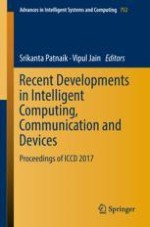This book offers a collection of high-quality, peer-reviewed research papers presented at the International Conference on Intelligent Computing, Communication and Devices (ICCD 2017), discussing all dimensions of intelligent sciences – intelligent computing, intelligent communication, and intelligent devices.
Intelligent computing addresses areas such as intelligent and distributed computing, intelligent grid and cloud computing, internet of things, soft computing and engineering applications, data mining and knowledge discovery, semantic and web technology, hybrid systems, agent computing, bioinformatics, and recommendation systems. Intelligent communication is concerned with communication and network technologies, such as mobile broadband and all optical networks that are the key to groundbreaking inventions of intelligent communication technologies. It includes communication hardware, software and networked intelligence, mobile technologies, machine-to-machine communication networks, speech and natural language processing, routing techniques and network analytics, wireless ad hoc and sensor networks, communications and information security, signal, image and video processing, network management, and traffic engineering. Lastly, intelligent devices are any equipment, instruments, or machines that have their own computing capability. As computing technology becomes more advanced and less expensive, it can be incorporated an increasing number of devices of all kinds. This area covers such as embedded systems, radiofrequency identification (RFID), radiofrequency microelectromechanical system (RF MEMS), very-large-scale integration (VLSI) design and electronic devices, analog and mixed-signal integrated circuit (IC) design and testing, microelectromechanical system (MEMS) and microsystems, solar cells and photonics, nanodevices, single electron and spintronics devices, space electronics, and intelligent robotics.
